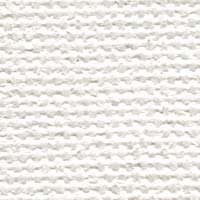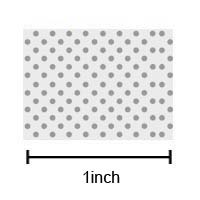| Glossary Of Giclee Terms
[20] |
D
D-max D-max, short for maximum density, refers to the darkest or maximum black value that can be achieved in a printed image. It represents the deepest shadow detail and the highest level of ink saturation that can be reproduced on a printing substrate. In Giclée printing, achieving a rich and dense D-max is important for enhancing contrast, depth, and visual impact in printed images, especially in areas with deep shadows or dark tones. High-quality printing substrates and ink formulations are often used to maximize D-max and ensure optimal print quality and longevity. |
| D-min D-min, short for minimum density, refers to the lightest or minimum density value in a printed image. It represents the areas of the print with the least amount of ink or toner deposited on the substrate, typically corresponding to highlights and lighter tones. Achieving a consistent and appropriate D-min is essential in Giclée printing to ensure that subtle details and highlights are accurately reproduced, maintaining overall image fidelity and tonal range. Ensuring an appropriate D-min is crucial as it establishes the baseline for the lightest tones in the printed image, contributing to overall tonal balance and image quality. |
| Desktop Printer A desktop printer is a compact and relatively inexpensive printing device designed for use on a desk or tabletop. Desktop printers are commonly used for personal or small-scale printing tasks, such as documents, photos, and artwork. In Giclée printing, desktop printers equipped with high-quality inkjet technology and archival-grade inks are often used by artists, photographers, and printmakers to produce small to medium-sized prints with professional-quality results, offering convenience, affordability, and versatility for printing fine art and photographic reproductions. Desktop printers offer users the flexibility to print directly from their computers or mobile devices, making them convenient tools for producing high-quality prints without the need for professional printing services. |
| Developer In traditional photography, a developer is a chemical solution used to process photographic film or paper, converting latent image particles into visible images. However, in the context of Giclée printing, the term "developer" typically refers to the software used to process digital images, adjust their properties, and prepare them for printing. This software allows users to fine-tune aspects such as color balance, exposure, contrast, and sharpness to optimize the appearance of the image before it is printed. |
Diasec Diasec is a registered trademark for a process used for face-mounting prints like photographs on acrylic sheets. The process was invented by Heinz Sovilla-Brulhart in 1969.
Because of the different light penetration and refraction of acrylic compared to normal glass, the colours are more brilliant and the image sharper than compared to standard glass in a picture frame. A Diasec mount is usually of a high gloss finish. Because the print is glued to the acrylic glass, the result is a completely flat mount of the image.
Process
The process aims to mount the print without air bubbles or smears. The image is face mounted and bonded to the acrylic glass with a gel silicone sealant which acts as a glue.
Normally the print is placed on a carrier at the backside. This is usually dibond, a composite plate of aluminium and plastic. Aluminium or other materials are also possible. If the print has to be backlit, translucent materials are necessary. |
| Digital Image A digital image is a visual representation of an object, scene, or artwork that is captured, created, or stored in digital form. It consists of a grid of pixels, each containing color or grayscale information, arranged to form a two-dimensional picture. Digital images can be created using digital cameras, scanners, or computer graphics software and stored as digital files in various formats. They can be displayed on electronic devices, shared online, or printed using Giclée printing technology, offering versatility and flexibility for artistic expression and communication. |
| Digital Printing Digital printing refers to methods of printing from a digital-based image directly to a variety of media. It usually refers to professional printing where small-run jobs from desktop publishing and other digital sources are printed using large-format and/or high-volume laser or inkjet printers. Digital printing has a higher cost per page than more traditional offset printing methods, but this price is usually offset by avoiding the cost of all the technical steps required to make printing plates. It also allows for on-demand printing, short turnaround time, and even a modification of the image used for each impression. |
| Digital Watermark A digital watermark is a hidden or visible marker embedded in a digital image to indicate ownership, authenticity, or copyright information. It is typically added during the image editing or printing process and can take the form of text, logos, patterns, or cryptographic codes. Digital watermarks help protect the intellectual property rights of artists and photographers by deterring unauthorized use, reproduction, or distribution of their images. In Giclée printing, digital watermarks can be incorporated into printed images to provide traceability and authentication, ensuring that prints are genuine and authorized. |
| Diorama A diorama is a three-dimensional model or display that depicts a scene or landscape in miniature scale, often enclosed within a box or frame. Dioramas are commonly used in art, education, and entertainment to recreate historical events, natural environments, or fictional worlds with intricate detail and realism. In Giclée printing, dioramas can be photographed or digitally reproduced to create high-quality prints that preserve the depth, texture, and perspective of the original three-dimensional artwork. |
| Dots per inch (dpi) Dots per inch (DPI) is a measurement used to describe the resolution of a digital image or the output resolution of a printing device. It represents the number of ink dots or pixels that can be printed or displayed within one linear inch of space. Higher DPI values indicate greater image detail and smoother tonal transitions, while lower DPI values result in coarser detail and visible pixilation. In Giclée printing, selecting the appropriate DPI setting is crucial for achieving sharp, high-quality prints with accurate color reproduction and fine detail. |
Double primed canvas Canvas treated with two coats of lead paint, which acts as as a barrier to prevent the artist's paint from soaking into the fabric. Double primed canvas generally has a smoother surface and is stiffer. However, due to this stiffness, it can crack along the edges when stretched.
At KeenART media, the canvas we print on is specially treated for Giclée printing.
We also offer unprimed and double-primed artist canvas for sale. |
 |
| DPI DPI is a printing term that describes the number of dots per inch that are used to create an image. The higher the DPI, the higher the quality of the image. 300 DPI is sufficient for most applications. We recommend a higher DPI if you plan on resizing your images to a size larger than the original photos. |
 |
| Droplet Size Droplet size refers to the size of individual ink droplets ejected from the printhead of a printing device during the printing process. In inkjet printing, droplet size affects the resolution, sharpness, and color accuracy of printed images. Smaller droplets produce finer details and smoother gradients, while larger droplets may result in more visible ink dots and coarser texture. Printers with variable droplet size technology can achieve a wider range of tones and textures, allowing for high-quality Giclée prints with precise control over ink deposition and image reproduction. |
Dry Mount Press The machine used for dry mounting a print. The print, adhesive and backing board are laid on the flat surface of the press and pressed tightly between the lid and the base. The machine activates the adhesive using heat, which affixes the print to the backing.
We offer dry mounting services. Order online today! |
Dry Mounting The use of a heat-activated adhesive to affix a paper print to a hard surface, such as foam core, Gatorboard or Dibond (a thin, aluminum sheet).
We offer dry mounting services on various substrates. |
| Drying Time Drying time is the amount of time required for printed images or ink layers to dry completely on the printing substrate after being ejected from the printer. In Giclée printing, drying time varies depending on factors such as ink type, substrate material, environmental conditions, and printing settings. Proper drying is essential for ensuring that prints are smudge-resistant, durable, and ready for handling and display. Fast-drying inks and optimized printing conditions can help minimize drying time and improve workflow efficiency in Giclée printing. |
| Duck canvas A tightly woven, heavy, plain-weave, bottom-weight fabric with a hard, durable finish. The fabric is usually made of cotton. |
Dye Sublimation Sublimation is a process where an image can be printed onto transfer paper using dye-based inks and then with heat and pressure become transferred into the substrate.
Dye sublimation on hard surface surfaces is possible if the surfaces have been coated. Instead of printing images directly on a surface, which may scratch easily, the image is infused into the coating to provide permanent protection and durability.
|
| Dye-Based Inks Dye-based inks are liquid colorants composed of soluble dyes dissolved in a carrier liquid, such as water or glycol. These inks are commonly used in inkjet printers for their vibrant colors, wide color gamut, and smooth color transitions. Dye-based inks are known for producing prints with high color saturation and excellent image quality, particularly on glossy or coated papers. However, they may be less resistant to fading and moisture compared to pigment-based inks, making them more suitable for indoor use and short-term applications in Giclée printing. |
| Dye-Sublimation Printer A dye-sublimation printer is a type of digital printing device that uses heat to transfer dye directly onto a substrate, such as paper, fabric, or plastic. The process involves printing the image onto a special transfer paper using dye-sublimation inks, then applying heat and pressure to transfer the dye onto the substrate, where it sublimates and bonds with the surface. Dye-sublimation printers are commonly used for producing high-quality, durable prints with continuous-tone images, vibrant colors, and smooth gradients, making them popular for applications such as photo printing, textile printing, and product decoration in Giclée printing. |
|
© 2002-2024 - KeenART Media Ltd.
|
|
| |
|

